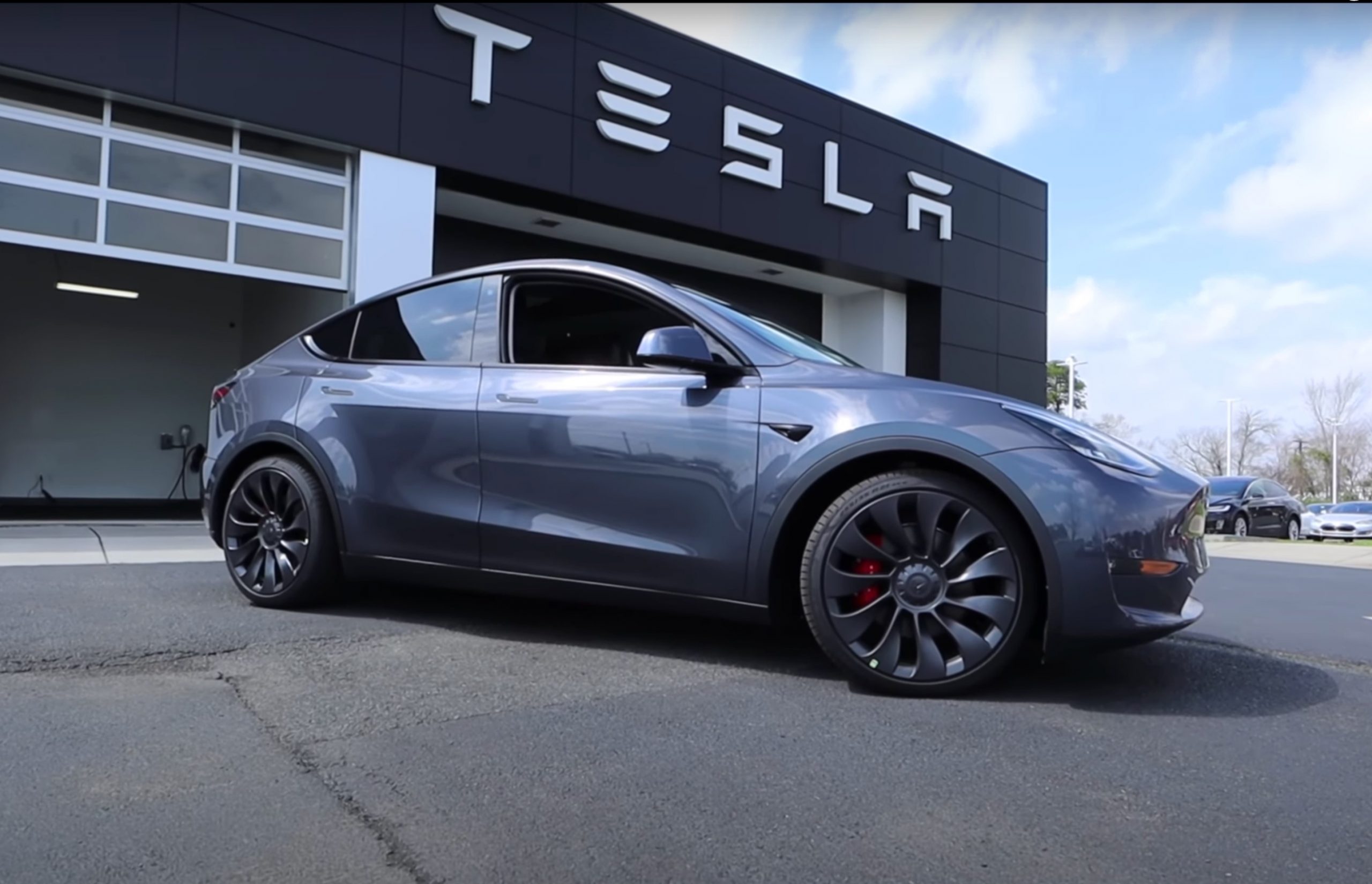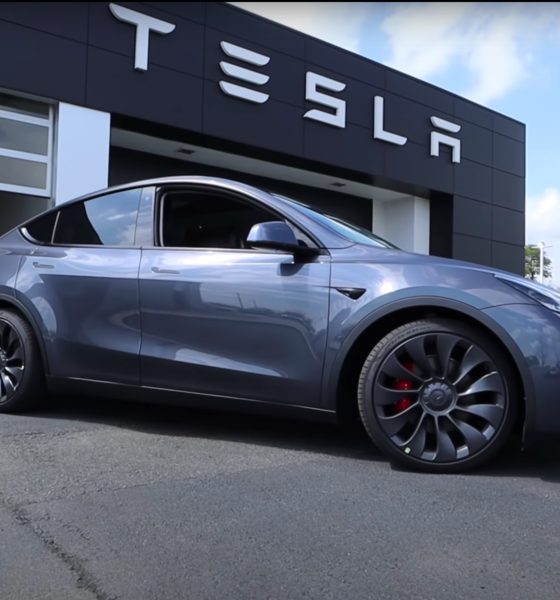

Investor's Corner
Tesla (TSLA) Q2 2020 earnings call: Top 4 things to watch out for
Tesla (NASDAQ: TSLA) will report its Q2 2020 performance in an Earnings Call on Wednesday, July 22, 2020. Ahead of the call, investors and supporters of the electric automaker will be waiting to see if the company will turn its fourth straight profit, which would be a company record.
However, four things could ultimately affect Tesla’s performance during the second quarter of the year, which could lead to the company’s inclusion in the S&P 500 index. TheStreet believes that investors should pay attention to these four themes in the Q2 2020 Earnings Update Letter and Call.
1. Impact of Price Cuts
Tesla has reduced the prices of all four of its available vehicles so far in 2020. The move stimulated demand for the company’s electric cars, but analysts are conflicted about whether the strategy was a good business move or an indication that demand is lagging. However, it more than likely is not the latter, as Tesla managed to deliver 90,650 vehicles in the second quarter, beating Wall Street estimates handily. The company’s revenue for Q2 compared to its overall delivery figure for the quarter will give more insight into what the price cuts did to Tesla’s demand.
2. Free Cash Flow
TSLA shares have continued to rise in value nearly every day for the past few months. The run is particularly incredible because it has mainly occurred during the COVID-19 pandemic, which continues to tear through the United States, where the electric automaker is based. With the company’s surge in price per share, Tesla has overtaken Toyota as the most valuable automaker in the world. The company’s bulls believe Tesla can scale production around the globe, and the company is certainly looking to do that. With plans to open another production facility in the U.S. soon, Giga Berlin under construction, and rumors of another Asian and U.K. located factory in the works, there is no reason to believe that the company can’t assume worldwide success.
3. China Demand
China has become one of the main parts of Tesla’s success as an automaker in 2020. The company currently only produces the Model 3 at Giga Shanghai now, but the vehicle has been selling well according to figures from the China Passenger Car Association (CPCA). Tesla will look to expand its production to the Model Y soon as it is building the Shanghai factory’s “Phase 2” currently. Dan Ives, an analyst for Wedbush Securities, said, “strong Model 3 demand out of China remains a ray of shining light (and we believe was a clear standout in 2Q) for Tesla in a dark global macro.” He also believes that Tesla could deliver 150,000 vehicles this year in China alone.
Giga Shanghai is currently holding a 200,000 annual vehicle production rate, Tesla said in the Q1 Earnings Call. It will be interesting to see if that number has increased.
4. Full-Year Outlook
Tesla has managed to power through the COVID-19 pandemic with relatively small amounts of damage. However, the company’s outlook for all of 2020 has not been updated. Both the Fremont and Shanghai production facilities were closed for one and a half months, and two weeks, respectively. The company expected to deliver 500,000 cars this year, but in the first half of the year, only 179,000 were successfully given to consumers. Tesla said it would modify its full-year guidance in Q2 during the Q1 Earnings Call, so the revisions to the company’s goals will likely be included with the Update Letter.
Disclosure: I have no ownership in shares of TSLA and have no plans to initiate any positions within 72 hours.

Investor's Corner
Tesla stock closes at all-time high on heels of Robotaxi progress

Tesla stock (NASDAQ: TSLA) closed at an all-time high on Tuesday, jumping over 3 percent during the day and finishing at $489.88.
The price beats the previous record close, which was $479.86.
Shares have had a crazy year, dipping more than 40 percent from the start of the year. The stock then started to recover once again around late April, when its price started to climb back up from the low $200 level.
This week, Tesla started to climb toward its highest levels ever, as it was revealed on Sunday that the company was testing driverless Robotaxis in Austin. The spike in value pushed the company’s valuation to $1.63 trillion.
Tesla Robotaxi goes driverless as Musk confirms Safety Monitor removal testing
It is the seventh-most valuable company on the market currently, trailing Nvidia, Apple, Alphabet (Google), Microsoft, Amazon, and Meta.
Shares closed up $14.57 today, up over 3 percent.
The stock has gone through a lot this year, as previously mentioned. Shares tumbled in Q1 due to CEO Elon Musk’s involvement with the Department of Government Efficiency (DOGE), which pulled his attention away from his companies and left a major overhang on their valuations.
However, things started to rebound halfway through the year, and as the government started to phase out the $7,500 tax credit, demand spiked as consumers tried to take advantage of it.
Q3 deliveries were the highest in company history, and Tesla responded to the loss of the tax credit with the launch of the Model 3 and Model Y Standard.
Additionally, analysts have announced high expectations this week for the company on Wall Street as Robotaxi continues to be the focus. With autonomy within Tesla’s sights, things are moving in the direction of Robotaxi being a major catalyst for growth on the Street in the coming year.
Elon Musk
Tesla needs to come through on this one Robotaxi metric, analyst says
“We think the key focus from here will be how fast Tesla can scale driverless operations (including if Tesla’s approach to software/hardware allows it to scale significantly faster than competitors, as the company has argued), and on profitability.”

Tesla needs to come through on this one Robotaxi metric, Mark Delaney of Goldman Sachs says.
Tesla is in the process of rolling out its Robotaxi platform to areas outside of Austin and the California Bay Area. It has plans to launch in five additional cities, including Houston, Dallas, Miami, Las Vegas, and Phoenix.
However, the company’s expansion is not what the focus needs to be, according to Delaney. It’s the speed of deployment.
The analyst said:
“We think the key focus from here will be how fast Tesla can scale driverless operations (including if Tesla’s approach to software/hardware allows it to scale significantly faster than competitors, as the company has argued), and on profitability.”
Profitability will come as the Robotaxi fleet expands. Making that money will be dependent on when Tesla can initiate rides in more areas, giving more customers access to the program.
There are some additional things that the company needs to make happen ahead of the major Robotaxi expansion, one of those things is launching driverless rides in Austin, the first city in which it launched the program.
This week, Tesla started testing driverless Robotaxi rides in Austin, as two different Model Y units were spotted with no occupants, a huge step in the company’s plans for the ride-sharing platform.
Tesla Robotaxi goes driverless as Musk confirms Safety Monitor removal testing
CEO Elon Musk has been hoping to remove Safety Monitors from Robotaxis in Austin for several months, first mentioning the plan to have them out by the end of 2025 in September. He confirmed on Sunday that Tesla had officially removed vehicle occupants and started testing truly unsupervised rides.
Although Safety Monitors in Austin have been sitting in the passenger’s seat, they have still had the ability to override things in case of an emergency. After all, the ultimate goal was safety and avoiding any accidents or injuries.
Goldman Sachs reiterated its ‘Neutral’ rating and its $400 price target. Delaney said, “Tesla is making progress with its autonomous technology,” and recent developments make it evident that this is true.
Investor's Corner
Tesla gets bold Robotaxi prediction from Wall Street firm
Last week, Andrew Percoco took over Tesla analysis for Morgan Stanley from Adam Jonas, who covered the stock for years. Percoco seems to be less optimistic and bullish on Tesla shares, while still being fair and balanced in his analysis.

Tesla (NASDAQ: TSLA) received a bold Robotaxi prediction from Morgan Stanley, which anticipates a dramatic increase in the size of the company’s autonomous ride-hailing suite in the coming years.
Last week, Andrew Percoco took over Tesla analysis for Morgan Stanley from Adam Jonas, who covered the stock for years. Percoco seems to be less optimistic and bullish on Tesla shares, while still being fair and balanced in his analysis.
Percoco dug into the Robotaxi fleet and its expansion in the coming years in his latest note, released on Tuesday. The firm expects Tesla to increase the Robotaxi fleet size to 1,000 vehicles in 2026. However, that’s small-scale compared to what they expect from Tesla in a decade.
Tesla expands Robotaxi app access once again, this time on a global scale
By 2035, Morgan Stanley believes there will be one million Robotaxis on the road across multiple cities, a major jump and a considerable fleet size. We assume this means the fleet of vehicles Tesla will operate internally, and not including passenger-owned vehicles that could be added through software updates.
He also listed three specific catalysts that investors should pay attention to, as these will represent the company being on track to achieve its Robotaxi dreams:
- Opening Robotaxi to the public without a Safety Monitor. Timing is unclear, but it appears that Tesla is getting closer by the day.
- Improvement in safety metrics without the Safety Monitor. Tesla’s ability to improve its safety metrics as it scales miles driven without the Safety Monitor is imperative as it looks to scale in new states and cities in 2026.
- Cybercab start of production, targeted for April 2026. Tesla’s Cybercab is a purpose-built vehicle (no steering wheel or pedals, only two seats) that is expected to be produced through its state-of-the-art unboxed manufacturing process, offering further cost reductions and thus accelerating adoption over time.
Robotaxi stands to be one of Tesla’s most significant revenue contributors, especially as the company plans to continue expanding its ride-hailing service across the world in the coming years.
Its current deployment strategy is controlled and conservative to avoid any drastic and potentially program-ruining incidents.
So far, the program, which is active in Austin and the California Bay Area, has been widely successful.








